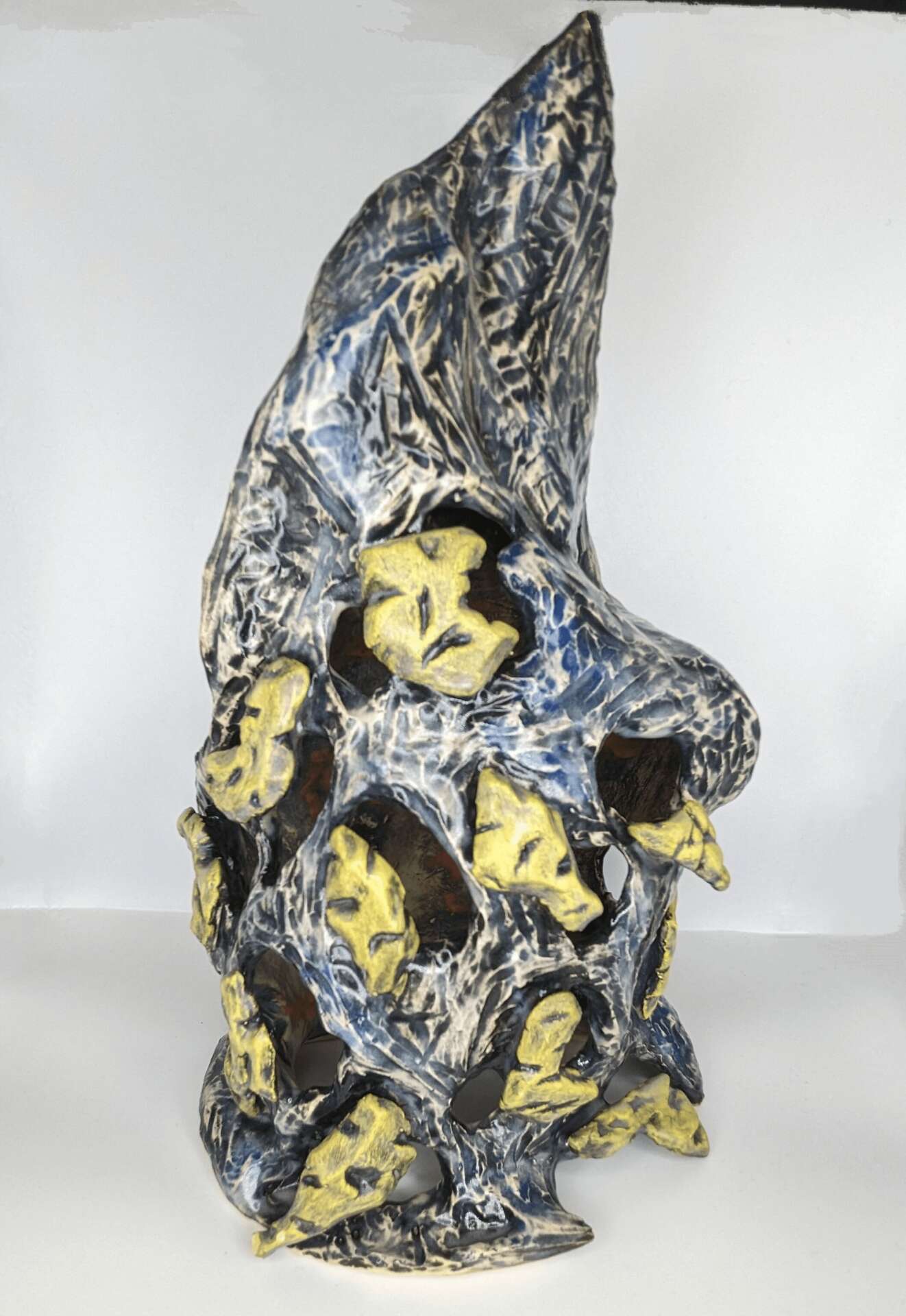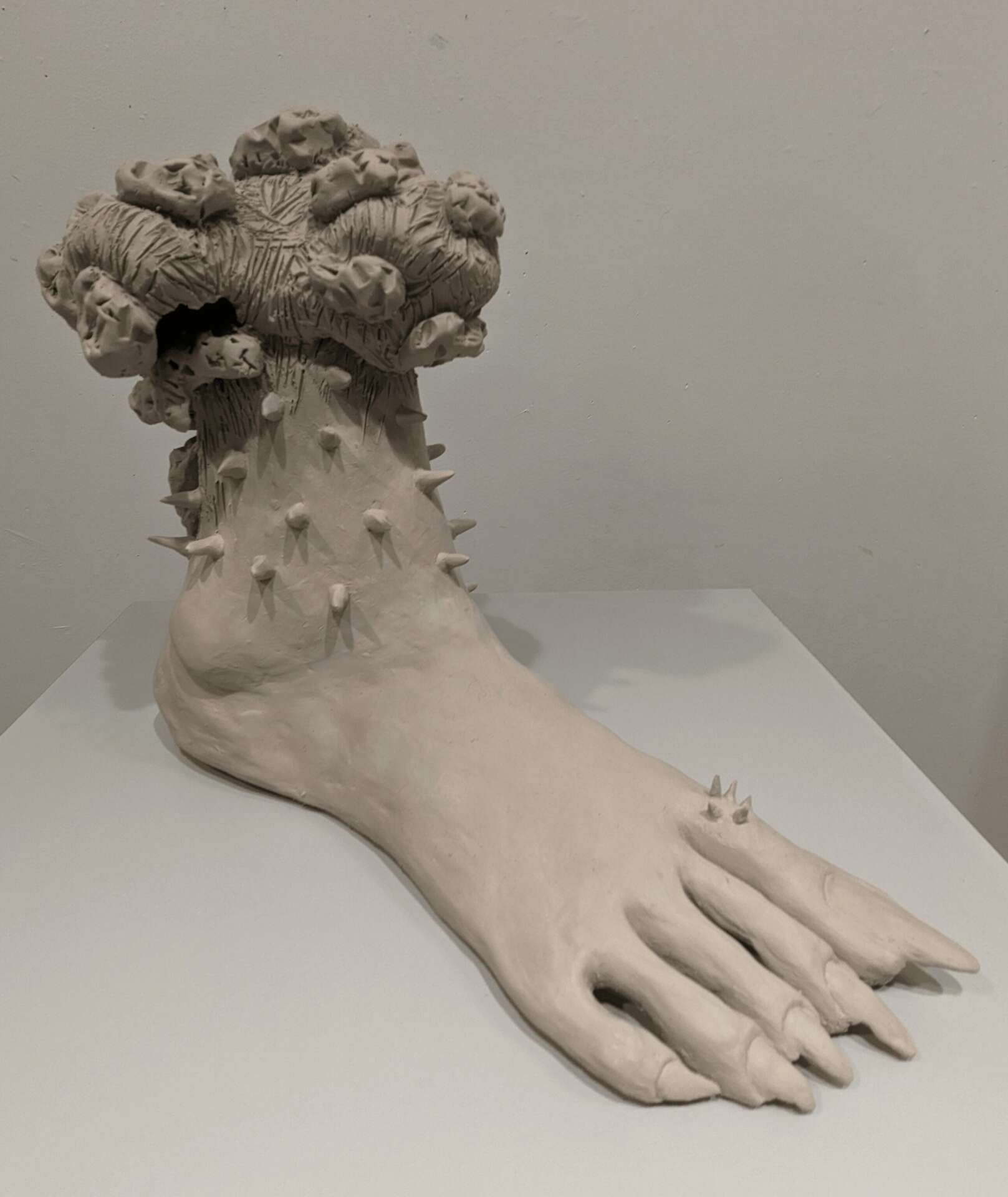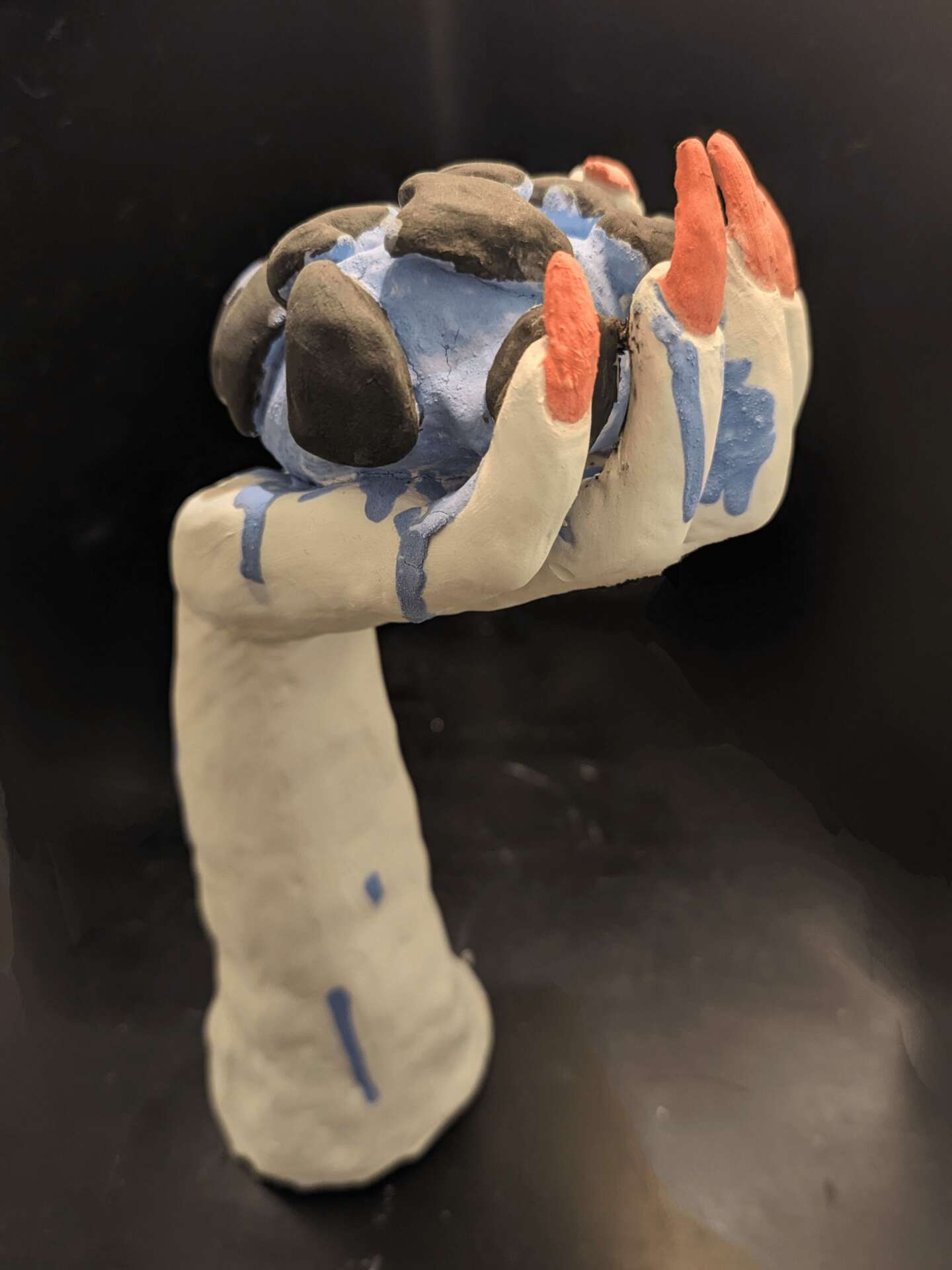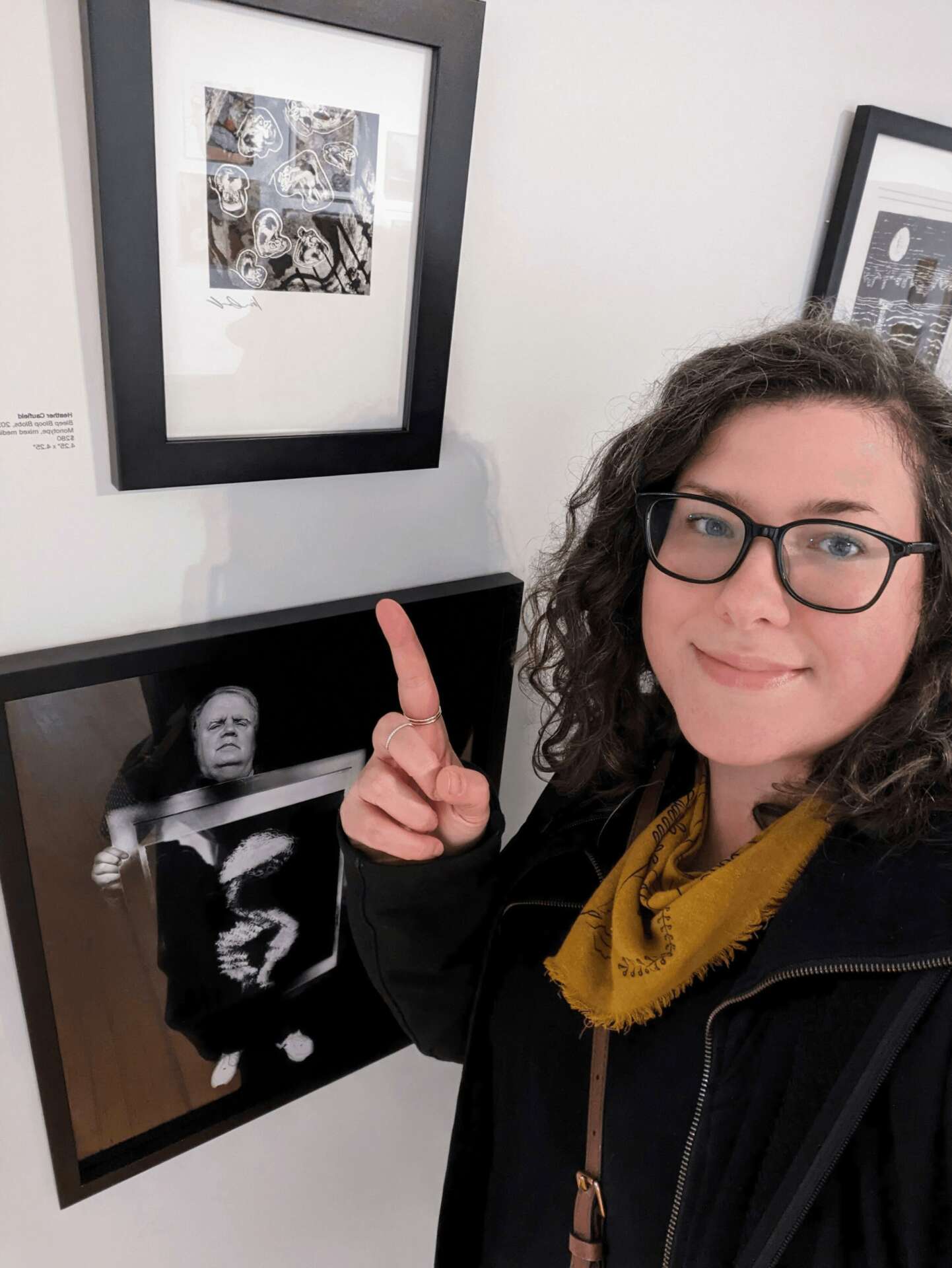We caught up with the brilliant and insightful Heather Caufield a few weeks ago and have shared our conversation below.
Heather, thanks for joining us, excited to have you contributing your stories and insights. Did you always know you wanted to pursue a creative or artistic career? When did you first know?
I first knew I wanted to pursue a creative/artistic path professionally when I realized I was going to pursue a college degree and decided that continuing with my passion for art would make me the happiest. When I began college, I started with an Art Studio Major focus but never found a real connection with a certain medium that was worth pursuing further. It wouldn’t be until later that I found my path as a multidisciplinary artist.
During my studies, I took some Art History courses, then decided that maybe a path of supporting the arts and artists was a better fit for me. I began taking Museum Studies courses and ended up adding that as a minor. I found the museum world fascinating and when I had the first chance to help plan an exhibition, I was hooked!


Awesome – so before we get into the rest of our questions, can you briefly introduce yourself to our readers.
I am a multidisciplinary artist and the Artistic Director at a non-profit art organization.
After graduating college, I began working at View Center for Arts & Culture in my hometown in the Adirondacks Mountains. I started as the Exhibitions Assistant and by the time I left, was the Visual Arts Manager running the exhibitions program and all the related programming. During my time at View, I assisted and led the installation of about 250 exhibitions. The exhibitions ranged from local to international and from solo to juried exhibitions with a wide variety of themes and media. Working with art and artists became a life-changing opportunity for me!
Exhibitions became my main interest. It was extraordinary to me the idea of being able to put together something so inspiring and to highlight the talent of the artists. Every detail behind installing an exhibition became a focus that I couldn’t get enough of. Installing art is an art form in itself! Every spot an artwork is chosen to be hung or the placement of a pedestal makes a huge difference in presenting the show to an audience.
To be able to take an artist’s vision and bring the work together in a space is essentially taking their creations and presenting them to the world for them. Finding the perfect flow can be challenging but once you put it together like a puzzle, it all makes sense. I enjoy having a uniform exhibition just as much as having an exhibition with a wide variety of work. When working with a wide variety, I often do not bring similar themes, media, and/or techniques together. For example, I rarely hang two landscapes together, I feel as if they are competing and too similar in nature. Instead I will often find an abstract style work where the works compliment each other through form, color, composition, presence, etc. I continue to learn and grow during each exhibition. It’s a process and a practice just like any art form.
While at View, I also began working as an artist in my free time. I began taking classes in ceramics and my interest for the medium grew quickly. I focused on functional ceramics, mostly throwing on the wheel. I participated in exhibitions, art sales, and fundraisers. I enjoyed learning the techniques of throwing and hand building with clay along with the materials and chemistry of mixing together glazes from a formula. At one point I worked between exhibitions and the ceramic studio but I always knew that working in exhibitions was where I wanted to spend most of my time.
After my time at View, I began working at Woodstock School of Art (WSA) in Woodstock, NY. WSA has given me a chance to continue working in exhibitions but also add the experience of working with art instructors to plan, organize and advertise the classes and workshops. There are now about 50 instructors at the school who are unbelievably talented and renowned artists. As I began learning more about the classes/workshops and the instructors, I began to also study at the school. My art has since grown and developed, my ceramic work has changed from functional to sculptural and I have found a new interest in creating with mixed media and printmaking.
When I first moved to the area I continued working in functional ceramics but found myself guided towards hand building. I then began exploring other media at the school, printmaking and mixed media abstract art became an interest to me and I began to notice these abstract microscopic type forms appearing in my work. I now refer to them as “blobs.” Sure they could have a different technical art name but to me they are simply blobs.
Around the same time I took my first figure sculpture class and was intrigued by the process of taking a block of clay and removing/adding clay to make a sculpture. I started to realize how freeing it is to work this way. Things don’t have to be perfect, if there is a “mistake” I actually consider it to be the path that the work wanted to go in. A crack becomes a portion of the sculpture that’s removed or filled later after firing. A portion I carved too deeply into becomes another area to open or to add too.
Sculpture has given me a chance to really open and experiment. I then began to work in both printmaking and sculpture and took my prints and used them as references to make sculptures. Basically the prints began to feel like sketches to help me guide me into the creation of 3-D abstract sculptures. Currently, I work in printmaking mostly monotype, sometimes finished with mixed media, and ceramic sculpture. I find that often my work is very detailed so it’s a great fit for me and gives me the control I am often seeking, to come back to my prints and make them feel finished with other materials such as charcoal, acrylic paint, colored pencils, etc.
What my inspiration is for creating these works is to give the viewers a chance to escape reality and see something unknown. When creating, I think about how seeing something totally new can lead to a trance of discovery. I want these works to spark the viewer’s curiosity and ultimately present them with objects in which they have never seen or had a connection to before. Giving them the chance to open their mind and shift their perspective into the unknown around us.
Overall it has been exciting to work as both an artist and in the art world and have both passions grow alongside each other. I look forward to continuing in both and expanding my art knowledge and experience in multiple directions.

For you, what’s the most rewarding aspect of being a creative?
The most rewarding aspect of being an artist for me is the shift and excitement I get from creating. Art helps me shift into a focus and creative state in which all around me seems to disappear. I also often find it is a way to release dark moments from my past and sometimes my work is connected to these moments because without them I would not be who I am today.
My excitement for creating is also very rewarding; it leaves me feeling a joy that can only be found in this way. Art to me is happiness, sharing, passion, healing and so much more!
The most rewarding aspect of being an Artistic Director is working with creative people who find passion, happiness and expression through creating and showing their work. It’s so fulfilling getting feedback from artists in regards to my support with classes/workshops, events, exhibitions, etc.
Just the other day, I gave an artist some additional time to submit their work to a show and ended up receiving a note that said “Heather, Thank you so much for the extra day you gave me… I lost my mother last week and she was so proud of this piece and the idea it might hang in Woodstock. It means the world to me.” My eyes teared up as I read that! To be able to support artists in so many different ways reminds me why I love what I do and why I am so lucky!

In your view, what can society to do to best support artists, creatives and a thriving creative ecosystem?
There are several ways that society can help. One way is by visiting art organizations, galleries and museums. This can help in so many different ways from helping gain exposure to helping with grants. Purchasing artwork is another way that not only benefits the artist but if the work is purchased from an exhibition it can also benefit the organization. A simple way to help support is to share! Share meaning on social media you could like, comment or share an artist or art organization to bring new viewers. You can share your experience in general by word of mouth and suggest it to other people to check out.
Contact Info:
- Instagram: @heatherlaurelcaufield








